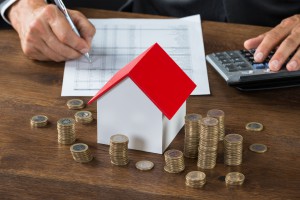There are more interesting articles, commentaries and analyst reports on the Web every week than anyone could read in a month.
Each Saturday morning I like to share some of the ones I’ve read during the week.
The weekend will be over before you know it, so enjoy some weekend reading.
Property market cools as home loans tumble
Following the the Royal Commission report – it looks like home loans have taken a hit, with the result being a cooler property market.
This article from thenewdaily.com.au looks at the results of the fallout.
The retreat of investors from the property market is starting to look like a rout, with a big fall in applications in March.
In seasonally adjusted terms, the value of investor loans fell 9 per cent, or almost $1 billion, over the month,
Over the year, investor lending is down more than 14 per cent.
Owner-occupier interest also cooled, down 1.9 per cent over the month.
Overall the value of mortgages issued over the month fell 4.4 per cent.
The impact of tougher credit rules demanded by APRA and the fallout from the bank royal commission’s study of lax lending standards by mortgage brokers are taking their toll.
While house prices have been falling for several months, the pace has picked up, with Sydney house prices down 1.2 per cent over the first three months of the year and Melbourne’s market down 0.7 per cent.
Things turning ugly: JP Morgan
JP Morgan’s Henry St John said things have started to turn ugly for housing finance.
“These developments in investor and high loan-to-income lending are likely unfolding on a faster schedule than APRA may have originally intended,” Mr St John said.
“To this point, it is likely that the scrutiny the royal commission is placing on the lending practices of the mortgage-broker channel, upon which the major banks have historically relied on for new lending growth, is acting as an additional catalyst.”
The number of owner-occupier loans being refinanced has fallen each month during the first quarter, while Mr St John suggests that tightening of lending criteria by the banks in recent months has halted the flow of mortgage holders switching lenders.
“The weakness in new owner-occupier lending was well-dispersed, with all states seeing declines in their annual rates of growth save for Queensland,” he said.
Investor activity likely to stay weak
Investors’ share of borrowing hit a five-year low of 34.1 per cent in March, while first home owners’ share also edged down for the first time in months.
ANZ’s Daniel Gradwell said there are few signs investor activity would bounce back any time soon.
“While this result predates APRA’s recent decision to remove the 10 per cent ‘speed limit’ on investor borrowing, it is hard to see a re-acceleration in the investor segment with sentiment clearly subdued,” Mr Gradwell said.
However, Mr Gradwell said recent decisions by several banks to cut investor mortgage rates, could prevent another sharp drop in borrowing.
Read the full article here
First homebuyers are…buying
Despite difficulties with finances and property prices – it seems that first home buyer, are still buying.
This Blog by Pete Wargent shows the statistics.
First homebuyers return
Some interesting statistics on the rolling annual number of first hombuyers.
New South Wales: 25,100 (+54 per cent from a year earlier)
Victoria: 33,500 (+24 per cent)
Queensland: 24,500 (+14 per cent)
Market incentives at work.
Read the full article here
Millennials making major sacrifices to buy their first home, as long as it’s a house
While millennial are often accused of spending all their money on smashed avocados and lattes – it looks like the truth is very different.
According to this article from Domain.com.au millennials are making many sacrifices in order to purchase their perfect house.
Millennials aren’t the frivolous, smashed-avo-on-toast-eating spenders they’re made out to be, and are more than willing to make plenty of sacrifices in the hope of buying into the Australian dream, according to a new survey.
Gen Y are also turning their backs on apartment living, ditching it in favour of a three-bedroom house with a backyard and close to work, shops and schools.
But despite their aspirations Millennials have a significant knowledge gap that seems to trip them over when it comes to buying their first home.ING’s new Millennial Homeownership Report found the overwhelming majority of young Australians aged 22-37 were serious about home ownership, with 76 per cent making sacrifices to afford a home.
More than half of Millennials were willing to forgo some parts of their lifestyle to save up for a deposit by cutting back on little luxuries, like going out for dinner or that smashed avo at
brunch.
A third were curbing big luxuries like holidays and one in 10 was delaying significant life events like a wedding, honeymoon or having children, just to get on the property ladder.
Less than a quarter weren’t making any sort of sacrifice for a deposit.
Most Millennials were also prepared to make concessions about where they lived, with more than 60 per cent willing to live in less established areas, and almost the same number willing to increase their commuting time by up to an hour to purchase their first property.
The newer generation’s goals and aspirations were similar to the Baby Boomers who went before them, according to Morgan Owen,
research director at Pollinate, which was commissioned for the survey.
They’re family oriented, they believe owning a home financially sets them up in the future, they feel more secure when they have bought a house.
But Mr Owen said the findings challenged the idea that Millennials were keen on apartment living, with two-thirds of respondents wanting a house with two or more bedrooms.
“Who is going to buy all these apartments that are going up?” he said.
Learning curve
Although many young people were saving for a home, they lacked a clear plan, with 61 per cent unsure how much they needed to save for a deposit.
Even those who think they knew how much to save were way off the mark, with $76,000 considered the average amount required for a deposit.
First home buyers typically required $170,000 for a deposit, according to ING’s Australia’s Head of Retail Banking, Melanie Evans, a whopping $100,000 difference between expectation and reality.
“It’s evident that they need help on how to go about saving for a deposit with many unaware of how much they need to save,” Ms Evans said.
A lack of knowledge about getting on the property ladder was a key issue for Sydney nurse Jess, who consulted a broker, a book and even then prime minister Tony Abbott about where to begin on saving for a first home.
She emailed Mr Abbott, inquiring about the First Home Buyer Super Savings Scheme after her superannuation company had “no idea” about it.
Director and co-founder of First Home Buyers Australia Taj Singh said most of his clients didn’t know where to start when it came to buying property.
“The most frequently asked question we get is ‘how much exactly do I need for my deposit?,” said Mr Singh.
He believed the confusion was due to the hot property markets in cities such as Sydney, which makes it difficult for aspiring property buyers to accurately calculate a sufficient deposit.
Read the full article here
Budget targets traffic congestion to improve city living
The 2018 budget aims to improve infrastructure – but what does the mean for the property market?
In this article for Switzer, John McGrath looks at what we should consider.
Looking at last week’s Federal Budget through the eyes of home owners, buyers and sellers, one of the most significant and relevant initiatives to us is the $1 billion Urban Congestion Fund.
It’s basically money for state projects aimed at reducing traffic ‘pinch points’ in our major cities.
The policy idea is concrete proof that traffic is becoming a real issue both economically and socially in our major cities, largely due to rapid population growth – and it needs to be addressed.
The Government is focused on the economic costs of congestion – estimated at $16B in 2015, with Treasurer, Scott Morrison saying busting congestion is “a very important economic objective.”
But for home owners, traffic is a lifestyle issue and it certainly impacts property values.
History tells us that anything done to reduce travel times between where we live and work has fundamentally changed the value of homes in affected areas.
Think about the M5 East in Sydney.
The road was completed in 2001 and house prices in Revesby, Roselands and Bexley North went up by more than 40% in 2001-2003.
How about Brisbane’s Inner City Bypass?
It was completed in 2002 and house prices went up by more than 50% in Clayfield and Ascot in 2002-2004.
Traffic congestion has a major impact on our lifestyles because so many of us prefer to drive to work. No matter how good the public transport is, we are a car-loving nation and statistics show we’ll drive to work if we can.
But sitting in traffic induces stress and soaks up time we could be spending doing other things.
It’s a real deterrent that buyers factor in when making decisions about where to live.
A report by the Grattan Institute published in October 2017* provides a new form of analysis of traffic congestion based on comprehensive Google Maps trip-time estimates.
Focusing on Sydney and Melbourne, the report confirms what every CBD commuter knows – traffic is getting worse.
Roads are proven to be busier and slower.
In the morning peak, the average CBD-bound trip in Sydney takes 70% longer than it would in the middle of the night when there’s no traffic; and around 80% longer in Melbourne. The report identified some specific ‘pinch points’ too:
- Sydney CBD commuters from Hurstville in the south and Balgowlah in the north face some of the worst delays. Drivers spend an extra 15 minutes on the road as a matter of routine, far longer than drivers commuting over similar distances from other parts of Sydney
- Melbourne CBD commuters have a worse time if they live in north-east areas like Heidelberg, Kew and Doncaster. Drivers using the Eastern Freeway and Hoddle Street in the morning peak are often delayed for more than 20 minutes – much longer than drivers from other parts of the city
Another big issue with traffic congestion is the unpredictable nature of it.
If it normally takes 30 minutes to get to work but on a bad day it can take 50, then people must allow 50 minutes every day if they want to make sure they’re never late.
The report points out that many people can handle traffic if the required travel time is reliable.
Unfortunately, in major ‘pinch points’, it’s usually not!
Bad traffic is prompting some Sydneysiders leave the city permanently.
According to our McGrath regional NSW Principals, more Sydney buyers are mentioning traffic as a direct reason for their choice to quit big city living.
Read the full article here
10 MOST BEAUTIFUL CASTLES IN THE WORLD THAT YOU MUST VISIT IN 2018
This weekend all eyes will be on the Royal Wedding – and the beginning of what many call a modern day fairyland.
So why not take a look at some of the most beautiful ‘fairytale-esque’ castles around the world in this article from trustorrun.com .
I spent most of my childhood dreaming of knights and castles thanks to the fantasy world brought to life by Disney.
My experience isn’t unique. We imagine princesses, knights, horses, moats, and even the occasional dragon in our fantastical renditions of these places.
Castles are meant to put our imaginations in overdrive because they were built to be mysterious and beautiful.
They remind us of the history in many different eras. Especially in Europe, where magnificent castles are a delightful sight.
Whether they were built for defense, or simply as a retreat, castles are always an awesome and imposing sight.
In this post, we have listed some of the most beautiful castles in the world that one must visit this holiday.
So, take a look at where to find the 10 Most Beautiful Castles in the World!
10 MOST BEAUTIFUL CASTLES IN THE WORLD
1) MONT SAINT MICHEL – FRANCE
Standing on the shores of Normandy, this picturesque castle is basically a small town that was built below and around an old abbey.
Constructed on an island, the awe-inspiring Mont Saint Michel Castle which usually seems to be rising up from the sea is one of the most remarkable Landmarks in France.
2) HOHENSALZBURG CASTLE – AUSTRIA
Hohensalzburg Castle is one of the oldest and the most preserved castles in Europe.
Located in the mountainous area of Salzburg, this castle was built during the eleventh century and later expanded in the fourteenth century.
3) STIRLING CASTLE – SCOTLAND
Stirling is one of the largest and the most important castles in Scotland. Perched on top of a rocky hill in central Scotland, this formidable fortress is surrounded by steep hills on three sides.
Not only was it used as a defensive structure, Stirling castle was also used as a royal center by some of the Stewart kings.
4) CONWY CASTLE, WALES – UNITED KINGDOM
This medieval fortification that is found on the north coast of Wales was built by Edward I during the Wale’s conquest in the 13th century.
The prominent eight tower castle is the most expensive of all castles constructed by Edward I.
5) NEUSCHWANSTEIN CASTLE- GERMANY
Neuschwanstein Castle, German for “New- Swanstone Castle” is a 19th-century palace found on the rugged hill of Bavaria.
The palace was first commissioned by Ludwig II as a retreat center and it was opened to the public after his death in 1886.
Over 1.3 million people usually visit this castle annually.
6) PRAGUE CASTLE, PRAGUE – CZECH REPUBLIC
Prague Castle is one of the oldest and largest castles in the world. Its construction began as early as the 9th century.
Prague Castle measures 570 meters long and 130 meters wide.
7) ALCAZAR OF SEGOVIA – SPAIN
This Spanish castle which is located in the old city of Segovia is Shaped like the bow of a ship.
Constructed on a rocky hill, Alcazar is the most distinctive castle in Spain.
It was originally built during the 12th century as a fortress and since then it has served as a state prison, royal palace as well as a military academy.
The Alcazar castle is one of the inspirations for the renowned Walt Disney Cinderella Castle.
8) MIRANDA CASTLE – BELGIUM
Miranda Castle, also known as the Noisy Castle, is a 19th-century castle that was built in 1866 and it’s found in Ardennes region, Belgium.
9) WINDSOR CASTLE- ENGLAND
Windsor castle is the royal residence England’s Monarchy.
Located in the county of Berkshire, this renowned castle is one of the most notable castles in England due to its architecture and decades of association with the royal family.
Over 500 people work and live in Windsor Castle.
10) HIMEJI CASTLE
Himeji Castle is the largest and also one of the most beautiful castles found in Japan.
Read the full article here
























No comments:
Post a Comment